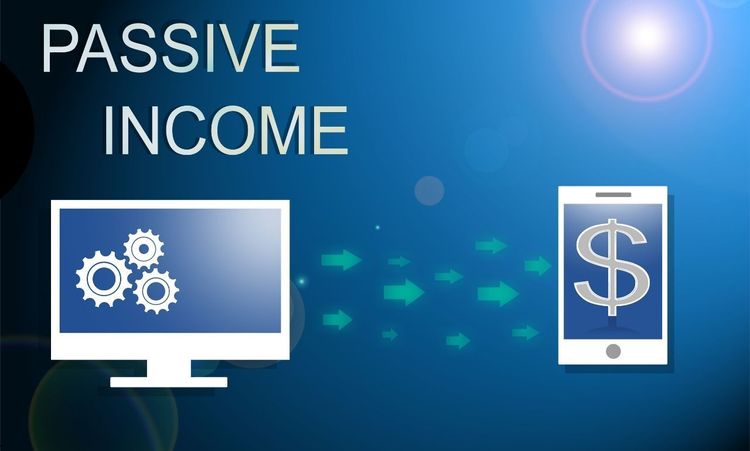Are you looking for a small loan but worried about high interest rates? You're not alone. Finding a small loan with a low interest rate can feel overwhelming, whether for an emergency, a new business venture, or personal expenses. But don't worry—we're here to help you uncover the secrets to securing great deals.
Key Components of Small Loan Interest Rates
When taking out a small loan, it's essential to understand what affects your interest rate and overall loan cost. Interest rates aren't random; they're based on specific components:
- Principal Amount: This is the amount you borrow, such as $5,000 for home improvements or $10,000 to consolidate debt. Your monthly payments and total interest depend on this figure.
- Interest Rate: The cost of borrowing money, expressed as a percentage of the principal. It can be fixed, staying the same throughout the loan, or variable, changing with market conditions.
- Loan Term: The repayment period can range from a few months to several years. Shorter terms often come with lower interest rates but higher monthly payments, while longer terms spread out payments but increase total interest.
- Fees and Charges: Many lenders include additional costs like origination fees, late payment penalties, and prepayment charges. These can significantly impact your loan's affordability, so always review the fine print.
Understanding how these components interact helps you compare offers and choose a loan that aligns with your financial goals.
APR vs. Interest Rate: What's the Difference?
While "interest rate" and "APR" (Annual Percentage Rate) are often used interchangeably, they're not the same. Knowing the difference lets you know your loan's actual cost.
- Interest Rate: This is the baseline cost of borrowing money, calculated as a percentage of the principal. For example, if you borrow $10,000 at a 5% interest rate, you'll pay $500 annually in interest.
- APR: This includes the interest rate plus additional fees and charges like origination or processing fees. It represents the total annual cost of the loan. Think of the interest rate as the ticket price and the APR as the ticket price plus service fees.
When comparing loans, focus on the APR for a clear picture of your total borrowing cost.
How to Qualify for the Lowest Interest Rates

Now that you understand what influences small loan interest rates let's explore actionable strategies to help you secure the lowest possible rate. Here are some practical tips to improve your chances:
- Boost Your Credit Score: Improve your credit score before applying for a loan. Lenders offer better rates to borrowers with strong credit histories. Pay off existing credit card balances, settle outstanding debts, and avoid making late payments. Even a slight increase in your credit score can significantly lower your interest rate.
- Shop Around for the Right Lender: Don't settle for the first offer you receive. Compare rates from traditional banks, non-banking financial companies (NBFCs), and fintech lenders. Each may have different eligibility criteria, interest rates, and terms. Look for lenders offering special promotions or discounts for specific loan types.
- Negotiate Loan Terms: Many borrowers don't realize that loan terms can be negotiable, especially if you have a strong credit history. Ask your lender if they can reduce the interest rate, waive certain fees, or offer more favorable terms. A confident negotiation can sometimes result in surprising savings.
- Opt for a Shorter Loan Tenure: While longer tenures may seem appealing due to lower monthly payments, they often come with higher interest rates. Choosing a shorter loan tenure can reduce the overall interest paid, saving you money in the long term. Ensure you can comfortably manage the higher monthly installments before committing.
By combining these strategies—improving your credit score, comparing lenders, negotiating terms, and selecting an optimal loan tenure—you can significantly reduce the interest rate on your small loan and save money over time. Always take time to understand your loan terms and conditions to make the most informed decision.
How to Calculate Small Loan Interest Rates
Understanding how interest is calculated on small loans is essential for making informed financial decisions. Lenders typically use two common methods to determine interest rates:
- Fixed Interest Rate: With this method, the interest rate remains constant throughout the loan tenure. This ensures predictable Equated Monthly Installments (EMIs), making it easier to budget. However, since the interest doesn't change, you might end up paying more interest overall compared to other methods, especially if the loan term is long.
- Reducing Balance Interest Rate: In this approach, the interest is calculated on the remaining loan balance after each payment. As you repay the loan principal, the interest decreases, resulting in lower overall interest payments. While the initial EMIs may be slightly higher than those with a fixed interest rate, this method can be more cost-effective over the loan term.
To calculate interest for small loans:
- For Fixed-Rate Loans, Use the formula Interest = Principal × Rate × Time. Divide the total interest across the loan tenure to determine your EMI.
- For Reducing Balance Loans: Use an amortization schedule or a financial calculator. This method involves recalculating interest after each payment based on the updated principal.
Understanding these calculations and their implications can help you compare loan options and choose one that best aligns with your financial goals.
What to Watch Out for When Taking a Small Loan

Taking a small loan can be a great financial solution, but watching for pitfalls that could increase your overall costs is essential. Beyond just focusing on interest rates, keep an eye out for hidden fees and charges that can add up quickly. Here are some key factors to consider:
- Processing Fees: Most lenders charge a processing fee, typically around 1–2% of the loan amount. While this might seem small, it can significantly impact your total borrowing cost, especially for larger loans. Always account for this when calculating the loan's affordability.
- Late Payment Fees: Missing a payment doesn't just harm your credit score; it often comes with steep penalties. These fees can be a fixed amount or a percentage of your outstanding loan balance, making timely payments crucial.
- Prepayment Penalties: Paying off your loan early might seem smart, but some lenders impose prepayment charges. These fees are designed to compensate for lost interest and can reduce the savings you'd expect from early repayment. Always check the loan agreement for prepayment terms before committing.
- Documentation Fees: Some lenders charge for paperwork and loan processing, which can vary widely.
- Insurance Requirements: Lenders may ask you to take loan insurance, adding to your costs.
- Annual Maintenance Fees: Certain loans come with annual fees to maintain the account, which could be another hidden expense.
By carefully reviewing the loan agreement and asking your lender about all potential charges, you can avoid surprises and ensure the loan is truly affordable. Always compare multiple lenders and choose the one with the most transparent terms and lowest total cost.
Factors Affecting Small Loan Interest Rates
Your loan's interest rate isn't set in stone—it depends on several factors, including:
Credit Scores
Your credit score is like your financial report card. Lenders peek at it to gauge how risky it is to lend you money. Credit scores are typically calculated based on:
- Payment History (35%): Late payments can tank your score.
- Amounts Owed (30%): High balances relative to credit limits raise red flags.
- Length of Credit History (15%): A longer history works in your favor.
- Credit Mix (10%): Various credit types show you can handle different debts.
- New Credit (10%): Too many recent inquiries can lower your score.
Improving your credit score even by a few points can significantly reduce your interest rate, saving you hundreds or even thousands over the life of the loan.
Loan Amount
The amount you're borrowing can influence the interest rate. Sometimes, smaller loans come with higher rates because, for lenders, the administrative costs don't decrease proportionally. So, even that small loan interest rate can be heftier than expected.
For example, a $2,000 loan might have a higher rate than a $20,000 loan. That's because the lender's cost to process both loans is similar, and they must ensure profitability on smaller amounts.
Conversely, larger loans might carry lower rates but require stricter qualification criteria. Lenders need assurance that they can handle the higher debt load. It's a balancing act. Determine exactly how much you need—not more, not less—to optimize the interest rate you receive.
Loan Term
Short-term or long-term? It's a critical choice. Short-term loans typically have higher monthly payments but might offer a lower interest rate and less total interest paid. Long-term loans spread out the payments, easing monthly burdens, but they often come with higher interest rates, meaning you pay more over time.
Consider this example:
- Short-Term Loan: Borrow $10,000 over 2 years at a 5% interest rate. Monthly payments are approximately $438, with total interest paid around $500.
- Long-Term Loan: Borrow $10,000 over 5 years at a 7% interest rate. Monthly payments drop to about $198, but the total interest paid balloons to over $1,800.
Your choice depends on your monthly cash flow and long-term financial goals. A shorter term can save you money in the long run if you can afford higher monthly payments.
Debt-to-Income Ratio
Your debt-to-income (DTI) ratio is a snapshot of how much of your income goes toward debt payments. Lenders calculate it by dividing your total monthly debt payments by your gross monthly income.
For instance, if you pay $1,500 in debt each month and have a gross income of $5,000, your DTI is 30%. Most lenders prefer a DTI of 35% or less.
A high DTI screams to lenders, "This person is stretched thin!" Consequently, they might hike up the interest rate to hedge their risks. Keeping your DTI in check can pave the way for more favorable rates. To improve your DTI, consider:
- Paying down existing debts.
- Increasing your income.
- Avoiding new debts before applying for a loan.
Interest Rate Landscape for Personal Loans
Interest rates fluctuate over time due to economic conditions, central bank policies, and market competition. For instance, central banks may lower rates during economic downturns to stimulate borrowing and investment. We've seen historically low interest rates in recent years, making borrowing more affordable. However, rates can begin to rise as the economy improves to keep inflation in check.
Staying informed about current trends can help you decide when to apply for a loan. Financial news outlets, central bank announcements, and economic indicators are valuable resources for tracking these trends. Understanding the current landscape can help you determine a reasonable small loan interest rate.
Even seasons can play a role. Certain times of the year, like the beginning of the year or after tax season, might see fluctuations in rates due to increased borrowing demand or lenders' desire to meet quotas.
Lenders might offer promotional rates during slow periods to entice borrowers. For example, some offer holiday promotions with lower rates or reduced fees. Being strategic about when you apply can make a difference. If you're not in a rush, waiting for these promotional periods could save you money.




